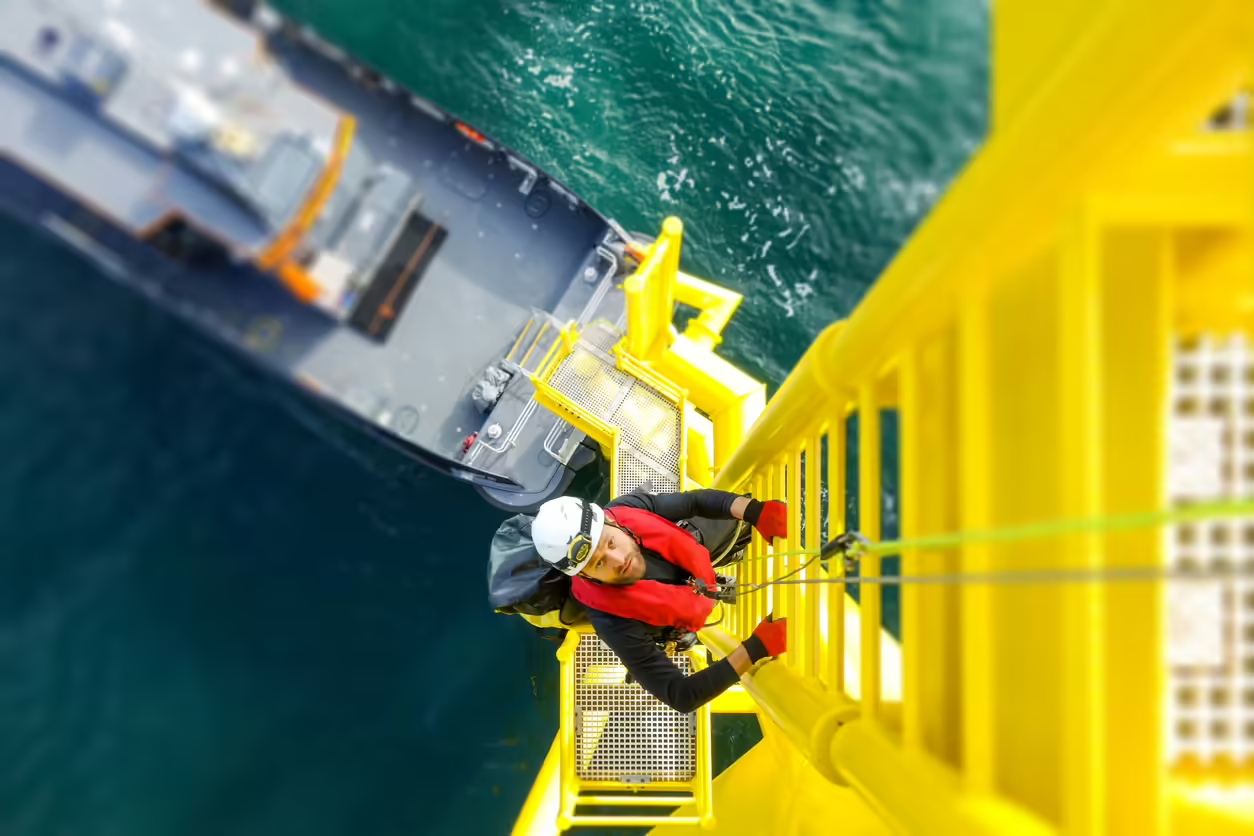
In 2022, the U.S. managed to consume about 20.28 million barrels of petroleum per day, up 2% from the previous year. While much of the country’s crude oil, which constitutes the raw, unprocessed version of petroleum, comes from reserves within the borders of the U.S., about 15% does not.
That 15% of crude oil comes from offshore drilling, a term that describes the act of drilling into the ocean floor to extract oil and gas from rock formations. Discover the basics of how offshore oil drilling works and how maritime laws affect employees who keep oil flowing.
How Drilling Companies Search the Ocean Floor For Oil
Before anyone can drill beneath the ocean floor, they must search for and find the oil. Here’s how companies accomplish that goal.
Leasing
Offshore drilling companies can’t just pick a spot and start looking for oil to extract. The waters located just off the U.S. coasts are public property, and maritime laws mandate that companies lease parcels of the ocean floor from the government.
Exploration
When looking for oil, companies often use seismic testing. Such a process involves a seismic survey boat dragging airguns that release high-pressure energy into the water.
The soundwaves then bounce off the ocean floor and send returning waves back to the surface. The waves are recorded and analyzed to indicate where there may be oil.
The company will then drill exploratory wells to investigate further using several types of mobile offshore drilling units (MODUs):
- Barges: Large platforms that sit on the sea floor with steel posts that reach above the water line
- Submersibles: A platform similar to a barge that allows water in certain compartments to submerge and hold the vessel to the sea floor
- Semi-Submersibles: A computer-controlled platform that floats on the water’s surface on top of a pontoon
- Jack-Ups: A platform that sits atop a barge and gets raised above the waterline with legs that extend down to the sea floor
- Drill Ships: A self-propelling ship that has a drilling rig on the top deck, which operates through a hole in the hull
The type of MODU used depends on water depth, weather conditions, and a multitude of other factors. All of these vessels operate with a blowout preventer (BOP) to keep employees safe from potential explosions.
The Process of Extraction, Production, and Transportation
Once companies find oil through exploratory wells, the production process can begin.
The company may convert an MODU into a production vessel or decide to use a dedicated production platform, such as:
- Compliant towers
- Tension leg platforms
- SPAR platforms
- Subsea systems
- Fixed platforms
- Floating production systems
Though these rigs are highly sophisticated, they don’t operate on their own. Instead, they often need hundreds of employees to perform the production labor. These highly skilled workers (who often have backgrounds in engineering, geology, commercial diving, and medical science) are at a high risk of injury when extracting and processing the oil.
The oil undergoes processing and then gets brought back via infield pipelines to the platform that lies at the surface. An export pipeline serves as the highway on which the oil is then transported back to the coast.
Keeping the Energy Flowing Can Be a Dangerous Job
While offshore drilling keeps the country moving, the job can undoubtedly be dangerous. Oil rigs carry highly combustible materials that can explode or cause burns. Objects can fall on employees, and employees can fall from high structures. Rough, unpredictable waters and hazardous materials present unique challenges as well.
If you or a loved one has been hurt in an offshore accident, consider getting help from an experienced maritime attorney who has familiarity with workers’ rights under the Jones Act and other laws. With legal assistance, employees and their loved ones can feel confident demanding justice from companies charged with protecting life during maritime ventures.
Contact the Undefeated Houston Personal Injury Lawyers from Zehl & Associates Injury & Accident Lawyers for Help Today
For more information, please contact our Undefeated personal injury attorneys in Texas at Zehl & Associates Injury & Accident Lawyers to schedule a free consultation today.
We proudly serve Harris County, Midland County, and throughout the state of Texas:
Zehl & Associates Injury & Accident Lawyers – Houston
2700 Post Oak Blvd #1000, Houston, TX 77056
(888) 603-3636
29.73890263937774, -95.4612824423294
Open 24 hours

Zehl & Associates Injury & Accident Lawyers – Midland
306 W Wall St Suite 701, Midland, TX 79701
(432) 220-0000
31.99827039117601, -102.07752974593966
Open 24 hours